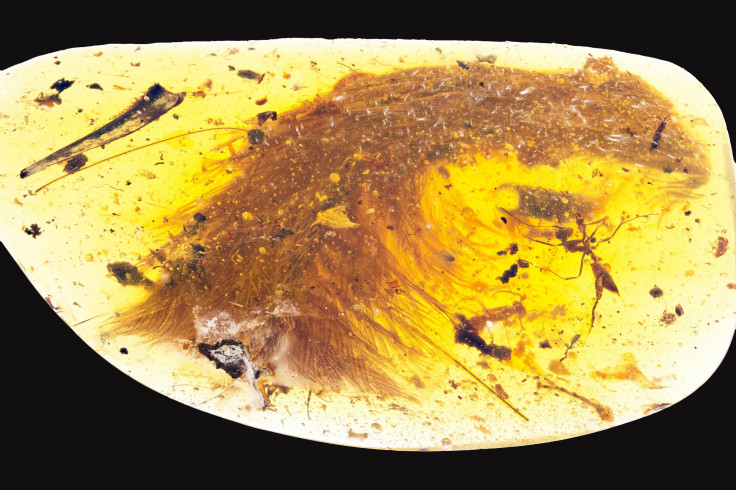Scientists discover the tail of a 100 million-year-old dinosaur, thanks to amber

The inherent preservation properties of amber come to light again as scientists discovered the tail of a 100 million-year-old dinosaur fossilised in amber. Even after a long gap of time, the tail maintains its original colour and shows a few traces of blood on it. Researchers believe that it is of a species belonging to the Tyrannosaurus rex family that lived in Asia 99 million years ago.
The 3.6cm long amber is hardened tree resin that was found in a market in Myitkyina, the capital of the State of Kachin, Myanmar. It was offered for sale in 2015, reports The Independent. One scientist saw it, understood its value and contacted his co-worker for further research in the matter.
Archaeologists had found individual feathers of dinosaurs in the past. But now is the first time that they are getting everything in one place; feathers, muscles and bones. The tail is not of a bird but that of a different kind of animal. Feathers appear more ornamental in nature rather than ones designed for flying. The team of scientists under the leadership of Lida Xing and Ryan McKellar published their findings in a journal entitled Current Biology, reports Business Insider. They had also published an article on the wings of a bird dinosaur preserved in amber.
The research done with funding from the expedition council of the National Geographic Society, reports Nat Geo.
An amazing story
The semitranslucent mid-Cretaceous sample of the well-preserved amber is almost the size of a dried apricot. It marks the earliest stage of the differentiation between the feathers of birds and those of dinosaurs. The lump of tree resin contains a 1.4inch feather-covered appendage. Scientists describe it as chestnut-coloured with a pale underside to it. A microscopic analysis and a CT scan show eight vertebrae from the middle to the end of a long and thin tail. Researchers believe that the tail may have 25 vertebrae. The structure shows a central point with branch-like forms stuck together with a latch.





















